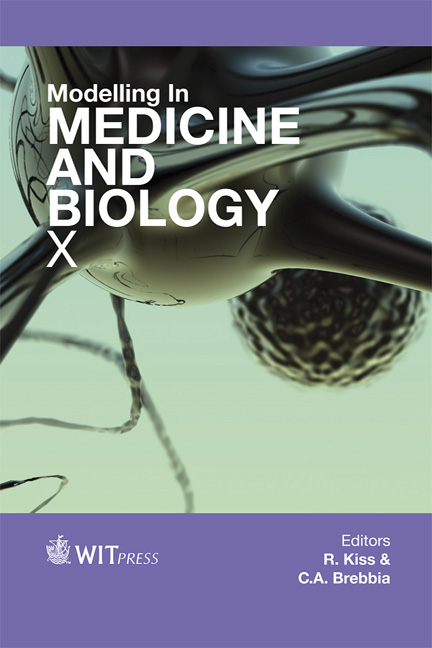Dual Reciprocity Boundary Element Modeling Of Collimated Light Fluence Distribution In Normal And Cancerous Prostate Tissue During Photodynamic Therapy
Price
Free (open access)
Transaction
Volume
17
Pages
11
Page Range
73 - 83
Published
2013
Size
843 kb
Paper DOI
10.2495/BIO130071
Copyright
WIT Press
Author(s)
K. E. Donne, A. Marotin & A. Al-Hussany
Abstract
Modified dual reciprocity boundary element (MDBM) solution to the diffusion approximation of the radiative transport equation is employed to calculate the light distribution in normal and cancerous tissue, when irradiated with a collimated light beam via a cylindrical diffusion optical fiber. Three different active widths of the light source were investigated separately. The results of the light distribution obtained with this method were compared to results obtained using an in-house Monte-Carlo (MC) simulation program, and showed very close agreement with each other. Both methods showed that the optical penetration depth of the therapeutic light is lower in cancerous than in normal prostate tissue. The MDBM is over 90% faster than the MC technique, which could eventually be used to develop a real-time multidimensional program to (1) qualitatively estimate the therapeutic light distribution in heterogeneous tissue and (2) predict the best position of light sources in the targeted tissue to optimi e photodynamic therapy treatment planning. Keywords: photodynamic therapy, radiative transport equation, photosensitiser, dual reciprocity boundary element, geometric function, radiance, anisotropy factor, fundamental solution, phase function and fluence rate.
Keywords
Keywords: photodynamic therapy, radiative transport equation, photosensitiser, dual reciprocity boundary element, geometric function, radiance, anisotropy factor, fundamental solution, phase function and fluence rate.





